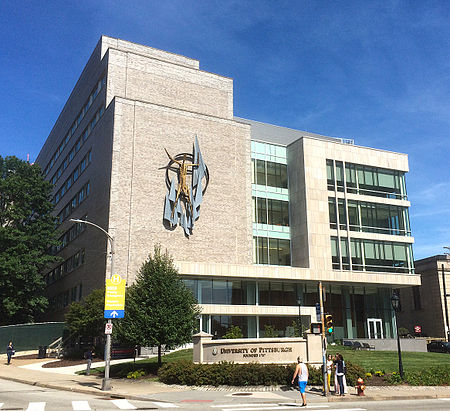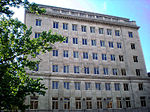Parran Hall

Parran Hall is the former name of an academic building on the campus of the University of Pittsburgh on Fifth Avenue in Pittsburgh, Pennsylvania, United States. The building, constructed to house the Graduate School of Public Health, was completed in 1957, and designed by Eggers & Higgins, architects of the Dirksen Senate Office Building, in the International Style with a major addition by Deeter-Ritchey-Sippel and Crump completed in 1967. The school was founded in 1948 with a $13.6 million grant ($153.4 million today) from the A.W. Mellon Educational and Charitable Trust. It was originally named after Thomas Parran Jr., a former head of the United States Public Health Service at the time the Public Health Service was sponsoring the Tuskegee experiment, in which patients with syphilis were studied but did not receive treatment for the disease.The nine-story building is the primary home of the Graduate School of Public Health. The building encompasses an entire city block bounded by Fifth Avenue, Bouquet, O'Hara, and DeSoto Streets. It contains a 282 seat auditorium, lounge, administrative offices, seminar rooms, classrooms, and faculty offices.
Excerpt from the Wikipedia article Parran Hall (License: CC BY-SA 3.0, Authors, Images).Parran Hall
Fifth Avenue, Pittsburgh
Geographical coordinates (GPS) Address Website Nearby Places Show on map
Geographical coordinates (GPS)
| Latitude | Longitude |
|---|---|
| N 40.442646 ° | E -79.958211 ° |
Address
University of Pittsburgh (Pitt)
Fifth Avenue 4200
15260 Pittsburgh
Pennsylvania, United States
Open on Google Maps








